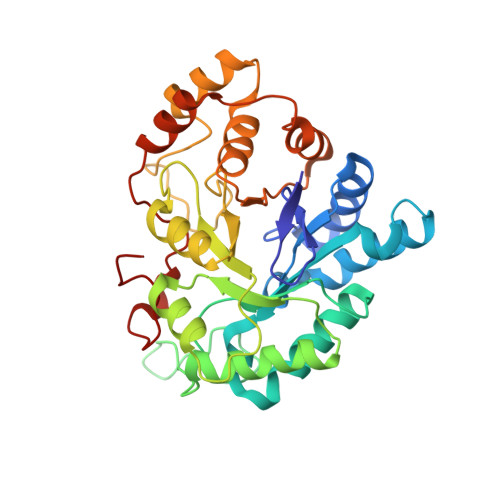Structural and thermodynamic studies of simple aldose reductase-inhibitor complexes.
Brownlee, J.M., Carlson, E., Milne, A.C., Pape, E., Harrison, D.H.(2006) Bioorg Chem 34: 424-444
- PubMed: 17083960
- DOI: https://doi.org/10.1016/j.bioorg.2006.09.004
- Primary Citation of Related Structures:
2INE, 2INZ, 2IPW, 2IQ0, 2IQD, 2IS7, 2ISF - PubMed Abstract:
The competitive inhibition constants of series of inhibitors related to phenylacetic acid against both wild-type and the doubly mutanted C298A/W219Y aldose reductase have been measured. Van't Hoff analysis shows that these acids bind with an enthalpy near -6.8 kcal/mol derived from the electrostatic interactions, while the 100-fold differences in binding affinity appear to be largely due to entropic factors that result from differences in conformational freedom in the unbound state. These temperature studies also point out the difference between substrate and inhibitor binding. X-ray crystallographic analysis of a few of these inhibitor complexes both confirms the importance of a previously described anion binding site and reveals the hydrophobic nature of the primary binding site and its general plasticity. Based on these results, N-glycylthiosuccinimides were synthesized to demonstrate their potential in studies that probe distal binding sites. Reduced alpha-lipoic acid, an anti-oxidant and therapeutic for diabetic complications, was shown to bind aldose reductase with a binding constant of 1 microM.
Organizational Affiliation:
Department of Biochemistry, Medical College of Wiscosin, Milwaukee, WI, USA.
















